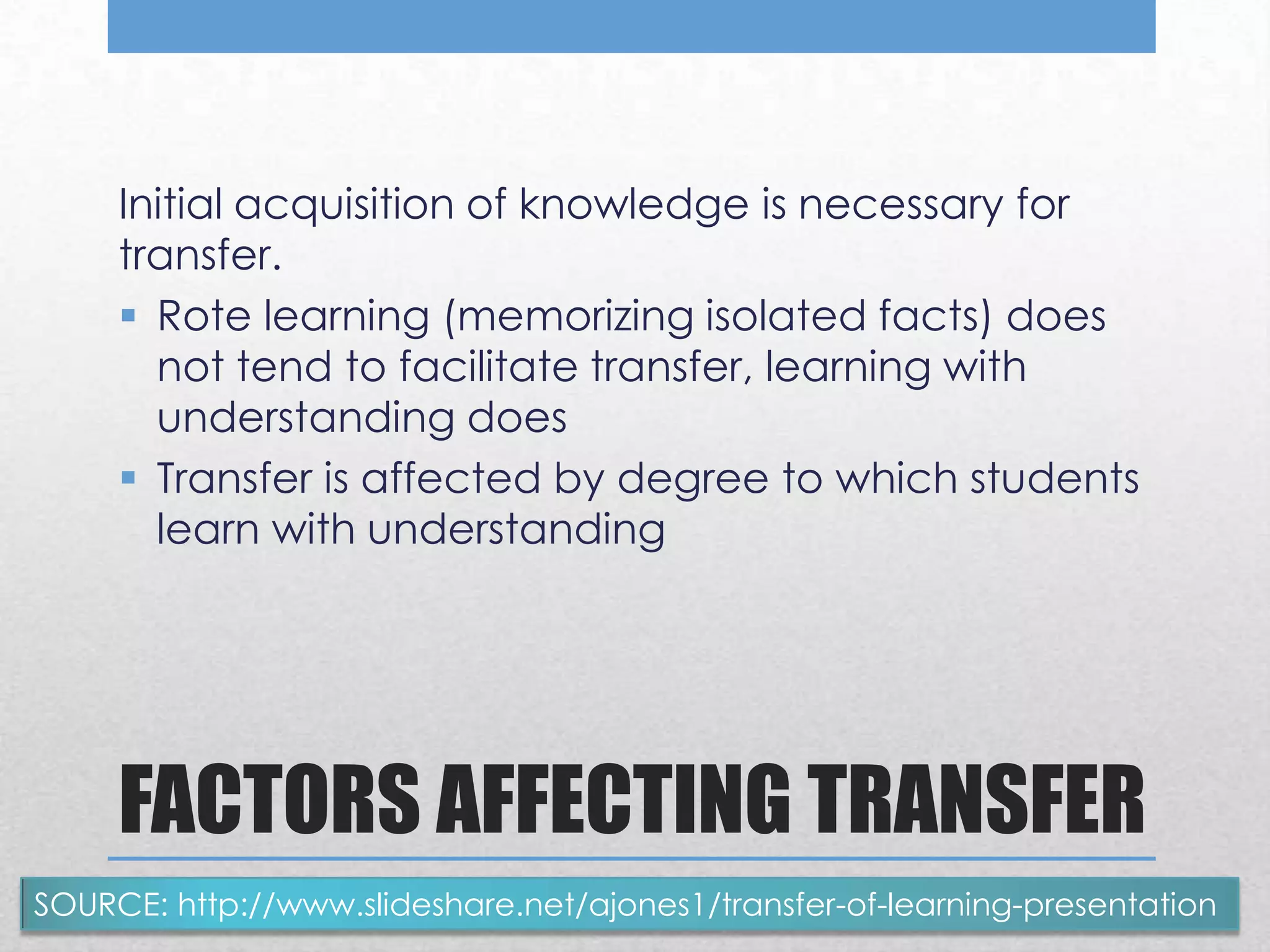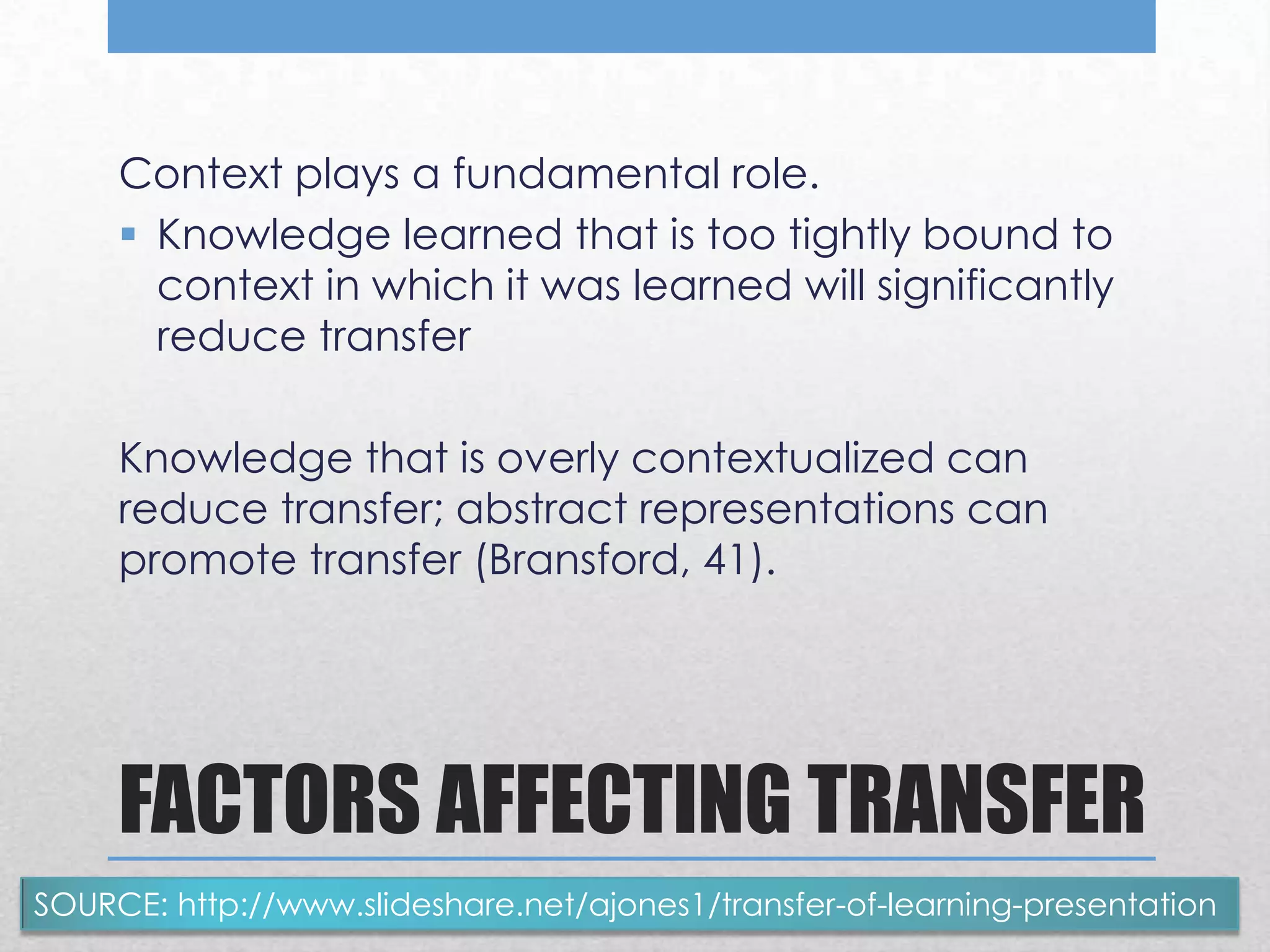Transfer of learning refers to how knowledge and skills learned in one context can be applied in another context. Early research by Thorndike and Woodworth explored how learning transfers between similar tasks. Transfer of learning depends on factors like the similarity between the original learning task and new transfer task, the level of understanding achieved during initial learning, the context of learning, opportunities for practice, and motivation. Educators can promote transfer by teaching in meaningful contexts, providing varied practice opportunities over time, and encouraging positive attitudes.




![TRANSFER OF LEARNING
Transfer of learning is the study of the
dependency of human conduct, learning, or
performance on prior experience. [wikipedia.org]
Transfer of learning occurs when learning in one
context or with one set of materials impacts on
performance in another context or with other
related materials. [Perkins and Salomon, 2012]
http://en.wikipedia.org/wiki/Transfer_of_learning
Perkins, D. and Salomon, G. (2012). Transfer of Learning. England: Pergamon Press](https://image.slidesharecdn.com/transferoflearning-131008165613-phpapp01/75/Transfer-of-Learning-5-2048.jpg)
























